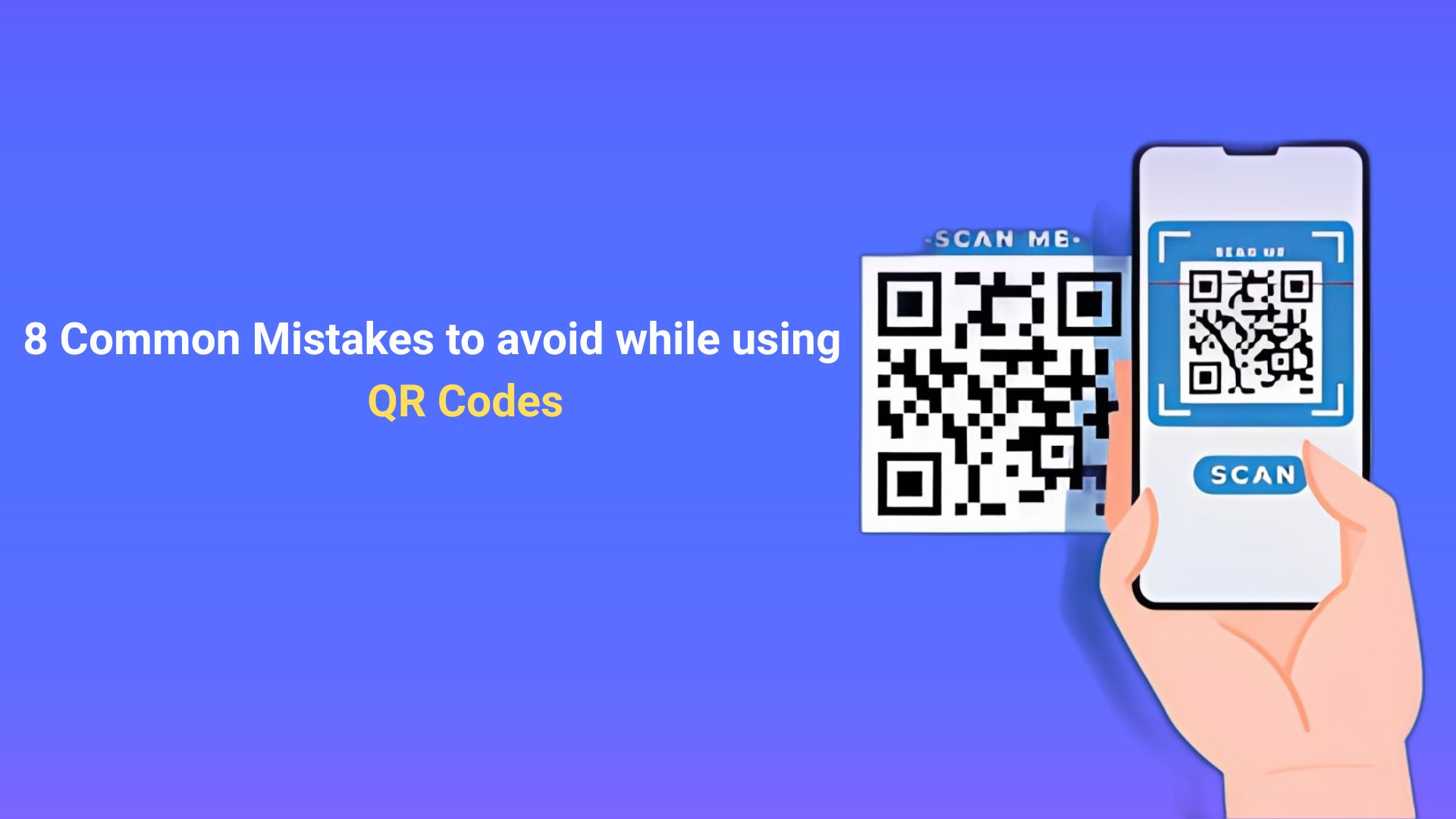
But while QR codes are simple to create, many businesses make mistakes that reduce their effectiveness. If you want your QR code to succeed, it’s important to know what to avoid. In this blog, we will explore 7 common mistakes merchants make while using QR codes
Some QR codes are created once and forgotten forever. But what if your content changes? Or what if you want to know how many people are scanning it? Without proper tracking or updating, you’re missing out on valuable insights. Dynamic QR codes (that can be updated without reprinting) are a better choice. They let you change the link or details anytime, and also allow you to track how often people use them. Static codes, on the other hand, stay fixed forever.
Believe it or not, not everyone knows what a QR code is or how to use it. Another mistake is adding a QR code without any instruction or hint. A simple “Scan me” or “Tap here to unlock” can make a big difference. Without direction, some users may ignore it completely. Clear instructions give people confidence and increase the chances of them actually scanning the code.
The final and often overlooked mistake is forgetting about what happens after someone scan and pay the QR code. If the content is irrelevant, boring, or takes too long to load, the experience ends badly. Always focus on the user journey. Scanning should feel rewarding, not disappointing. Whether it’s a menu, payment page, or promo, it should be quick, useful, and enjoyable. That’s how you turn one scan into repeat trust.
Using Temporary Links in Static Codes can cause problems. A static QR code points to a fixed link that cannot be changed. If that link is temporary, like a file that might be deleted later, the code will eventually stop working. This can leave users confused and frustrated when they try to access it. To avoid this, always use a dynamic QR code, which allows you to update the link easily whenever needed.
Don’t let your QR code links lag. A QR code should provide instant access to users. Slow-loading links can frustrate and discourage people from scanning. Heavy files, unoptimized websites, or busy servers can negatively affect the experience. Users expect quick and seamless access every time they scan a code. Delays can reduce trust and engagement with your brand. Optimizing both content and server performance is essential to maintain a smooth QR code experience.
Some people often forget that QR codes can be misused. A QR code might look harmless but can redirect users to unsafe websites. If you don’t regularly check your code’s link, you could unknowingly expose users to risks. Hijacked or malicious pages can harm both users and your brand’s reputation. Regular verification of QR links is essential to prevent such problems. Monitoring them consistently ensures they remain safe and trustworthy. Keeping your QR codes secure builds user confidence and a reliable experience.
Using plain QR codes without any branding can feel generic and untrustworthy to users. When a code looks standard, people may hesitate to scan it. Adding subtle branding, like your logo or brand colors, makes the code instantly recognizable. Branded QR codes create a sense of trust and professionalism. Users are more likely to engage with a code that clearly represents a familiar brand. It also helps reinforce your brand identity every time someone scans it. Small design touches can make a big difference in encouraging interaction.
Neglecting social media sharing is a common mistake many merchants make. QR codes integration can be a powerful way to grow your social media presence. They can link directly to profiles, posts, or sharing options. This makes it easy for users to follow, like, or share your content. When customers interact with QR codes, they can engage with your brand instantly. Using QR codes for social sharing encourages more interaction and builds community. It also helps turn customers into advocates who promote your brand naturally.
QR codes have transformed the way businesses and customers interact, making it easier than ever to share information, make payments, and engage with your brand. They are no longer just a tool—they are an experience. When executed thoughtfully, every scan becomes an opportunity to connect, build trust, and leave a lasting impression. Take your QR payments and customer interactions to the next level. Discover how Foloosi helps businesses create fast, secure, and engaging QR codes that truly work: https://foloosi.com/qr-code-payment-uae